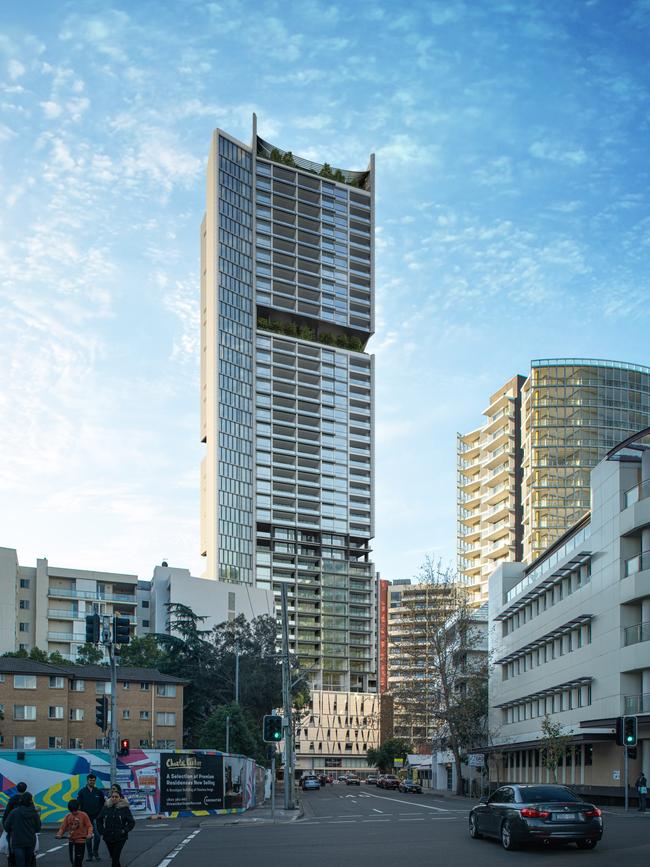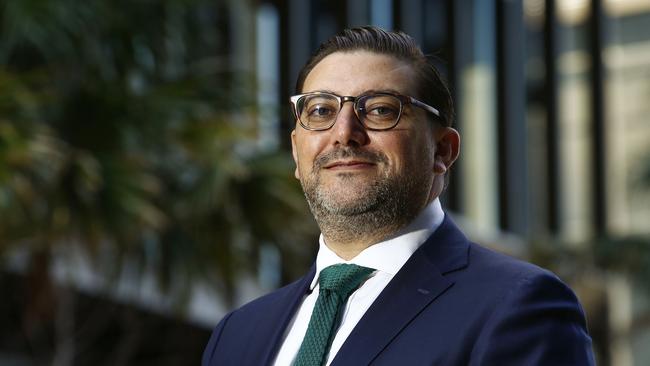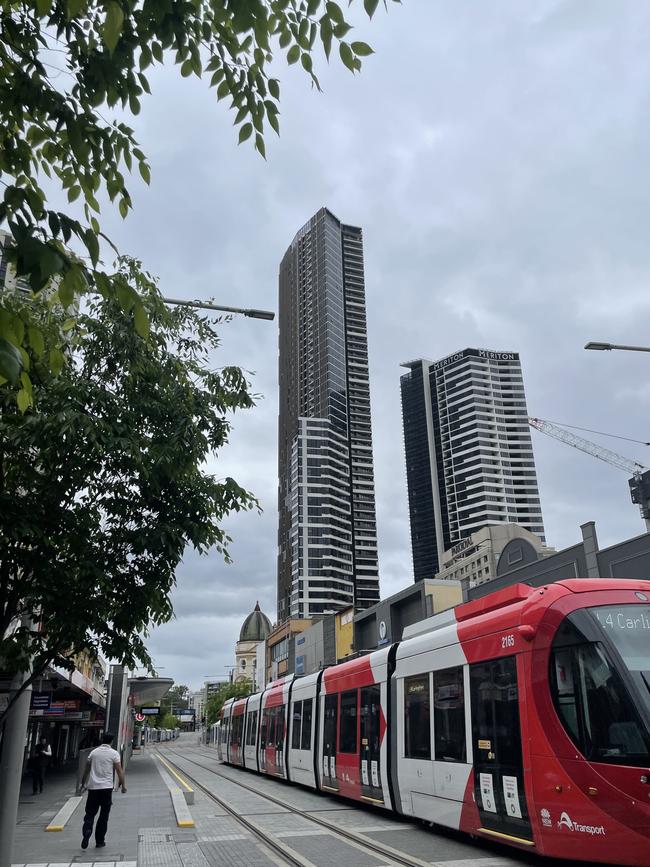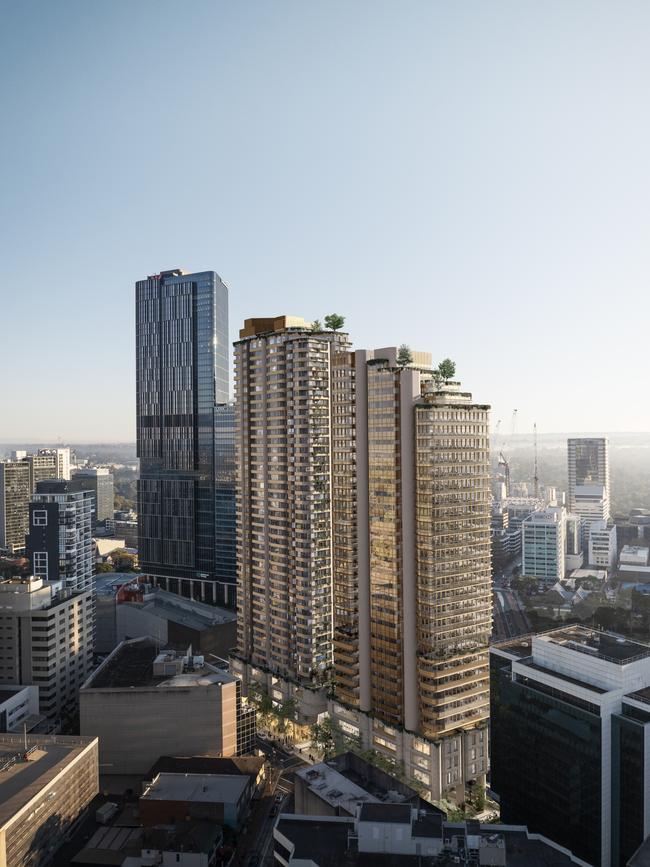Parramatta residential, commercial developments reshaping skyline of Sydney’s ‘second city’
A court may have rejected Jean Nassif’s bold plan for double skyscrapers in Parramatta after they were deemed “imposing”, but what growth is permitted in Sydney’s “second city”? Here’s what’s in the pipeline.
Parramatta
Don't miss out on the headlines from Parramatta . Followed categories will be added to My News.
It’s not often proposals for residential towers jostling for a spot in Parramatta’s burgeoning skyline are knocked back in a city battling a housing crisis.
Yet late last month, the Land and Environment Court threw out an appeal against the refusal of a former Toplace development application for two skyscrapers on top of an existing seven-storey podium at 189 Macquarie St in Parramatta.
The rejection seemed at odds with helping Parramatta keep pace as Sydney’s second city.
But civic and property leaders deny the court decision reflects the broader, robust state of residential growth in the CBD, where the council and government support lofty buildings helping Parramatta reach global city status.


Many would have dwarfed fugitive developer Jean Nassif’s proposed complex in height, if not the overall number of occupants.
At 180 George St, Meriton’s 67-storey north tower is the tallest residential building in Parramatta.
But it could be eclipsed if a 68-storey mixed-use development with build-to-rent units at Valentine Ave is approved.
Nearby, a 62-level tower with rent-only apartments, commercial offices and retail on a three-storey podium are slated for 33 Argyle St, and could even sprout to 80 storeys.
Former Parramatta Lord Mayor Steven Issa, who will return to the chamber this term, echoed the concerns of Parramatta Council and the court that Nassif’s proposed Macquarie St towers – which would have hosted more than 700 apartments – were poorly designed.
“I don’t think height was the issue,’’ he said.
“It was around design excellence, solar access and accessibility.
“I’m not afraid of height, I’m afraid of bad design.
“In my opinion I think it needs to contribute to the Parramatta skyline, I think aesthetically it needs to be pleasing for our community and – outside those superficial things – it needs to work for residents.’’
He said that included proper sunlight.

Other big buildings in the Parramatta skyline including Altitude towers at Church St, which contain 629 residential and serviced units across 55 and 39 storeys respectively.
In March 2022 the state government approved two towers housing 405 apartments to replace the Albion Hotel at the corner of Harris and George St. That will include 36 units for seniors, a cinema, a wine bar, function space, billiard rooms and indoor bowls.
Parramatta Council encourages high density in its CBD, which is classed as Sydney’s second city.
Its local environmental plan allows 69-storey residential buildings while commercial blocks can reach 52 levels.
“Taller buildings are generally limited to the core of the city centre, with reduced heights on the periphery to step down to lower-density development surrounding the area,’’ a council spokeswoman said.

The plan, initially called the Parramatta CBD Planning Proposal, came into effect in October 2022 and was created to help deliver 13,000 extra homes and about 56,000 additional jobs in the next 30 years.
It initially excluded North Parramatta, which contains a heritage zone, but NSW Premier Chris Minns overrode the planning rules last year to rezone the area and permit 30-storey apartment blocks flanking Church St.
Mr Issa wants more jobs for the influx of residents.
“To me I think we need to expand the commercial core,’’ he said.
“The question we have to ask is where are all these people going to work?
“We’ve got Camellia coming, North Parramatta CBD and South Parramatta, where are they all going to work?’’
This week, the state government’s new rezoning policy enabled the expansion of Urban Property Group’s Fitzwilliam St project to feature 800 build-to-rent dwellings and a 200-room hotel.
Plans for the office tower were scrapped in an effort to deliver double the number of homes originally planned, making it one of the largest build-to-rent projects in NSW.
Mr Issa labelled build-to-rent projects absurd “because the purpose of the CBD is to provide commercial space not to provide residential access so it’s kind of counterintuitive’’.

However, the Property Council of Australia’s western Sydney regional director, Ross Grove, said build-to-rent homes worked well in Parramatta.
“Parramatta has grown beyond some of the commercial centres in Sydney because it has always had a residential component,’’ he said.
“North Sydney is a ghost town at five o’clock.’’
Mr Grove said the industry supported Parramatta’s height limits of almost 70 storeys for residential blocks.
“We understand in many cases it’s difficult to go further because then you start interfering with flight paths,’’ he said.
“Certainly we’re in a better position to Hurstville and Bankstown because of those limitations.’’

Mr Grove was also not overly concerned about empty residential blocks in Parramatta given there were so many apartments that would eventually be occupied, including by many migrants.
The Lennox at Phillip St houses 441 residences in the 46-storey tower, with 38 levels for apartment dwellers.
Next door, Coronation at 8 Phillip St, is set to soar to 55 storeys with 314 apartments and 250 QT hotel rooms.
Commercially, “A-grade” office stock in the CBD, which includes new developments such as Parramatta Square, have low vacancy rates with occupants attracted to “flight in quality’’.
But the B-grade stock, which includes older offices, is not as appealing and over the past six months it plunged “astronomically” to a 43.8 per cent vacancy rate.
“It is deeply concerning because this is not stock ready to be demolished or rebuilt,’’ Mr Grove said.
Overall, he said office stock was healthy in Parramatta.
“Parramatta is incredibly well stocked when it comes to commercial offices at the moment,’’ he said.
The council aims to create more than 150,000 jobs across the local government area by 2050 as part of its “global transformation”.
That includes a steady stream of apartment developments.
While the Nassif proposal for 189 Macquarie St was rejected, ALAND has announced it acquired the site for $100m and will build smaller twin towers than the skyscrapers Nassif once proposed.
JKN Para, of which Nassif is the sole director, fought Parramatta Council to have its $212m plan – with 708 units over buildings 38 and 47 storeys tall – given the green light.
But the court rejected the ambitious proposal because the towers were deemed “excessively dominant” and “imposing”.
The plan also generated negative submissions from residents over impacts including loss of privacy, traffic congestion, noise, wind impacts, and concerns the towers would dominate the skyline and lead to an “oversupply of residential accommodation” in Parramatta.




